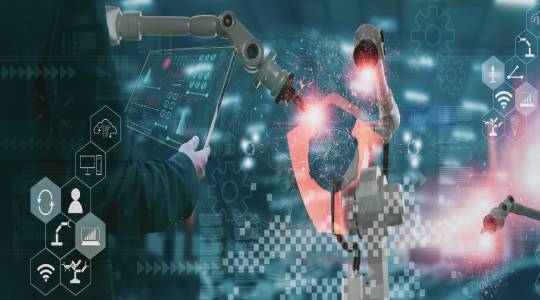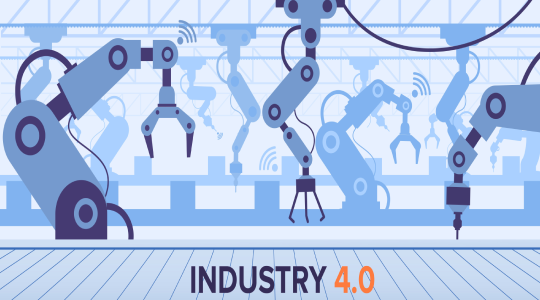With digital becoming the reality post COVID, the manufacturing industry is rapidly moving to new ways of working, accelerating their digitization journey. One of the biggest steps I have seen manufacturers taking to become Industry 4.0 ready is by kick-starting their IIoT initiatives. Although IIoT adoption is a great way to fast-track digital transformation and has rather become an urgency for most manufacturers, Industry 4.0 is not just about adopting and implementing the latest technologies. Data lies at the heart of smart manufacturing, and while data creation is not a problem, data collection and analytics are what need real attention.
IIoT success isn’t possible without the right approach to data management
Manufacturers looking to deliver tangible business value from their IIoT efforts often end up facing several roadblocks to success. These roadblocks are not due to the adoption of the wrong technologies or systems, but more because of a poor approach to IIoT data management. Since data is the most critical aspect of any IIoT initiative, understanding the role it plays in Industry 4.0 is vital for success.
If you want to build scalable and open architecture systems to bring multiple IIoT solutions under one umbrella that securely connect devices and applications, you need to ensure the data you have is clean, updated, relevant, reliable, and consistent. Since your IIoT devices are only as good as the data you feed them, having the right data is critical to:
- Streamline and automate operations to boost workforce productivity and improve efficiency and throughput of the equipment
- Monitor the performance of manufacturing systems in real-time and unearth key insights from across the supply chain
- Assess the health and performance of each device or process in your manufacturing setup and take steps to overcome bottlenecks
- Capture and analyze data in real-time to provide decision-makers with information that can be used to make accurate and timely decisions
- Receive alerts when devices are heading for a breakdown and stepping in time to minimize the probability and impact of downtime
Make data the star of your IIoT program
If you find yourself struggling to drive the intended results from your IIoT program, the chances that you’re relying on inaccurate and inconsistent data to feed your analytics algorithms are extremely high. Despite the time, money, and effort you put into bringing your IIoT dream to life, data management, if not approached the right way, can become the Achilles heel of your IIoT program.
Before you feed data into your analytics solutions, there are 5 data things to keep in mind:
- Data needs to be collected from multiple sources: Although the amount of data that is being generated is humongous, if you think you only need to work with data generated from your machines, you’re wrong! There’s more to IIoT than just machine data; in reality, any IIoT initiative that you begin needs to work with data that has been collected from multiple sources: right from devices and sensors to your processes, equipment, control systems, wearables, business applications, and more. Combining, consolidating, and correlating data from disparate sources is what will allow you to create new insights, uncover new problems, and capitalize on new opportunities, thus paving the way for Industry 4.0 success.
- Errors need to be eliminated: Data collected from multiple sources tends to also be in multiple formats including pictures, images, videos, reports, audio files, printed manuals, etc. These structured, semi-structured, and unstructured data could contain several errors and discrepancies. Since a single error can have huge ramifications, they need to be identified and eliminated in time for your IIoT program to really drive value.
- Data has to be normalized: In addition to eliminating errors found in the growing volumes of enterprise data, there is also a pressing need to normalize data and make it coherent and consistent. Although manufacturers today are able to easily gather massive datasets from distributed sources, correlating this data to derive both analytical and actionable meaning is just as important. While gathering data from different connected devices in the IIoT ecosystem, it is important to ensure the data collected is cohesive with already established inputs, for more accurate results.
- Data needs to be enriched: Your IIoT program also needs to work with data that has been enriched with context – to improve the accuracy of business decision-making. Although manufacturers collect massive volumes of data, not all of it is relevant; before assimilating all this raw data into a central database, it makes sense to understand the context of each data set and enrich it as required to improve its relevance.
- Data needs to be appropriately stored and analyzed: Manufacturers looking to derive maximum benefits from their IIoT investments also need to ensure the data they generate is appropriately stored and analyzed and is ready for use. Taking a modern approach to data management and embracing the cloud to store the swelling amounts of data is critical to enable the right level of analysis, scale, and integration.
Manufacturers today have more data at their fingertips than ever before, but often do not know how to leverage it for their IIoT initiatives. Since not all data that is generated from devices, processes, and systems is useful or relevant, following these data cleansing and enrichment steps is extremely important for IIoT success.
If you think you do not have the experience or competence in carrying out these steps, we can help! At Delpheon, we make IIoT data management simple and easy. Connect with us today to know how we can help you fast-track your Industry 4.0 initiatives and unlock new data-driven capabilities.



